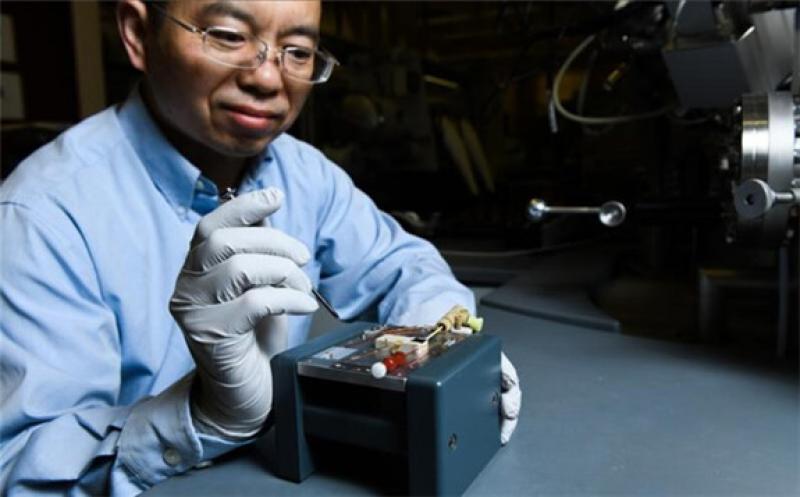What happens in a lithium-ion battery when it first starts running? A complex series of events, it turns out – from electrolytic ion reorganization to a riot of chemical reactions. To explore this early part of a battery’s life, researchers in the US have monitored a battery’s chemical evolution at the electrode surface. Their work could lead to improved battery design by targeting the early stages of device operation.

The solid-electrolyte interphase is the solid gunk that materializes around the anode. Borne from the decomposition of the electrolyte, it is crucial for preventing further electrolyte degradation by blocking electrons while allowing lithium ions to pass through to complete the electrical circuit.
The solid-electrolyte interphase does not appear immediately. When a lithium ion battery first charges up, the anode repels anions and attracts positive lithium ions, separating oppositely charged ions into two distinct layers. This electric double layer dictates the eventual composition and structure of the solid-electrolyte interphase.
Recent observation
Vital as it may be, the electric double layer had only been speculated and rarely observed until recently. Now team of researchers at the Pacific Northwest National Laboratory and the Army Research Laboratory led by Zihua Zhu has provided direct experimental evidence for the double layer using a homebuilt secondary ion mass spectrometer, a tool that analyzes ionized particles ejected from surfaces.
The patented instrument can identify the chemical makeup in layers as thin as several nanometres. Moreover, it can probe liquids — such as battery electrolytes — under vacuum conditions.
To carry out the measurement, the researchers assemble a vacuum-compatible battery by encapsulating a liquid electrolyte with a copper electrode followed by a silicon nitride barrier. Mass spectrometric analysis begins when a focused beam of bismuth ions drills into the silicon nitride layer, kicking up ions and leaving behind a small hole. The hole depth can be precisely controlled, and the corresponding ejected material is monitored as a function of depth.
No geysers
When the bismuth ion drill reaches the underlying liquid layer, the liquid surface tension and the small hole size prevent the electrolyte from “geysering” into the high vacuum environment. However, a few liquid particles do escape to be detected and analyzed.
“Our technique has excellent depth resolution and molecular recognition right at the solid-liquid interface,” says Zhu. “These are the advantages over rival techniques, such as transmission electron microscopy.”
The measurements paint a picture of how the solid-electrolyte interphase emerges. The electric double layer of positive and negative ions morphs into the solid-electrolyte interphase comprising a dense, lithium oxide-rich inner layer and a loose, organic outer layer.
Understanding the electric double layer provides insight into how to manipulate the solid-electrolyte interphase. For example, to incorporate fluorine into the inner layer for higher lithium ion mobility, adding fluorine-containing anions into the electrolyte will not work well because the anions will be repelled away from the anode. Zhu’s experiments suggest that introducing neutral, fluorinated solvent species instead of anions can bypass the electrical repulsion.
This study of the initial formation of the solid-electrolyte interphase “allows scientists to design new interphases to improve battery performance,” says Zhu. In the future, the researchers want to apply the same liquid-based mass spectrometry to study the cathode, as well as different electrode materials such as silicon.
Moreover, the close-up discovery of layers in the solid-electrolyte interphase presents new electrifying possibilities for further exploration in the same battery system. Several fundamental questions still remain, and Zhu and his team are already on the chase.